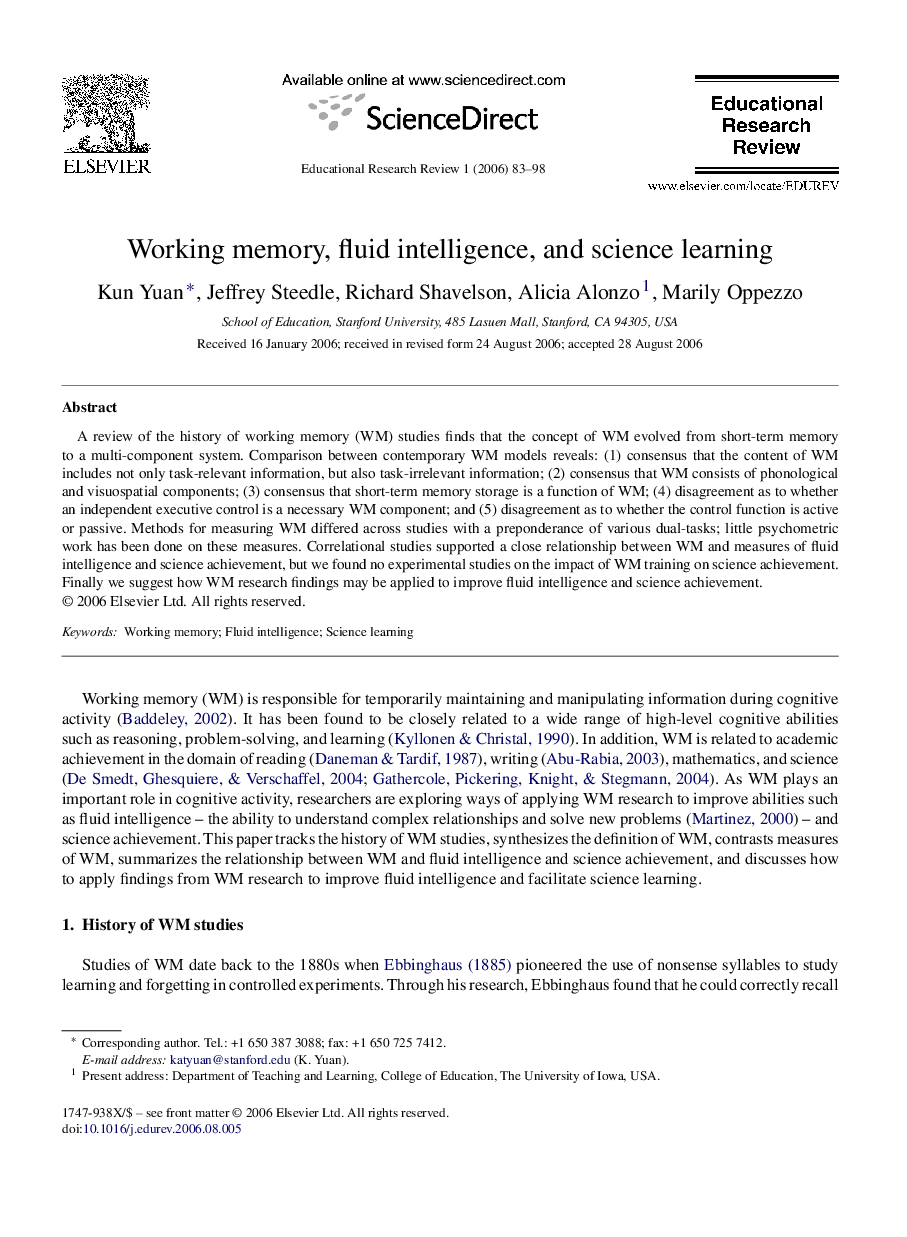| کد مقاله | کد نشریه | سال انتشار | مقاله انگلیسی | نسخه تمام متن |
|---|---|---|---|---|
| 355237 | 619256 | 2006 | 16 صفحه PDF | دانلود رایگان |

A review of the history of working memory (WM) studies finds that the concept of WM evolved from short-term memory to a multi-component system. Comparison between contemporary WM models reveals: (1) consensus that the content of WM includes not only task-relevant information, but also task-irrelevant information; (2) consensus that WM consists of phonological and visuospatial components; (3) consensus that short-term memory storage is a function of WM; (4) disagreement as to whether an independent executive control is a necessary WM component; and (5) disagreement as to whether the control function is active or passive. Methods for measuring WM differed across studies with a preponderance of various dual-tasks; little psychometric work has been done on these measures. Correlational studies supported a close relationship between WM and measures of fluid intelligence and science achievement, but we found no experimental studies on the impact of WM training on science achievement. Finally we suggest how WM research findings may be applied to improve fluid intelligence and science achievement.
Journal: Educational Research Review - Volume 1, Issue 2, 2006, Pages 83–98